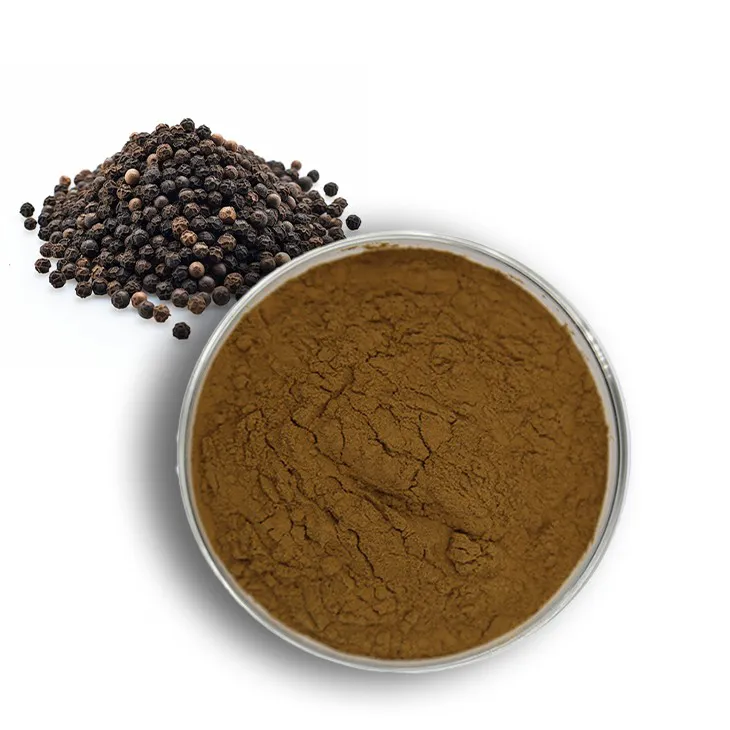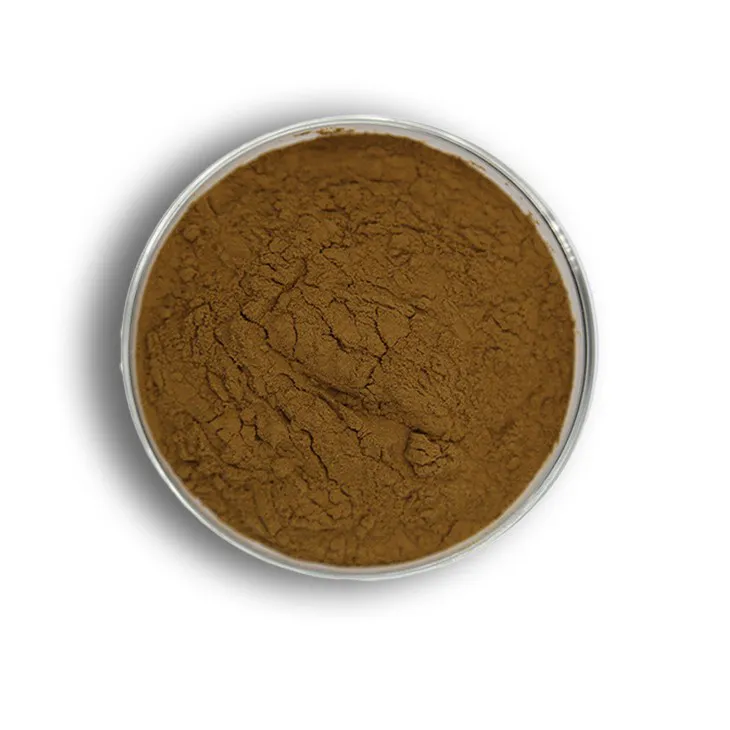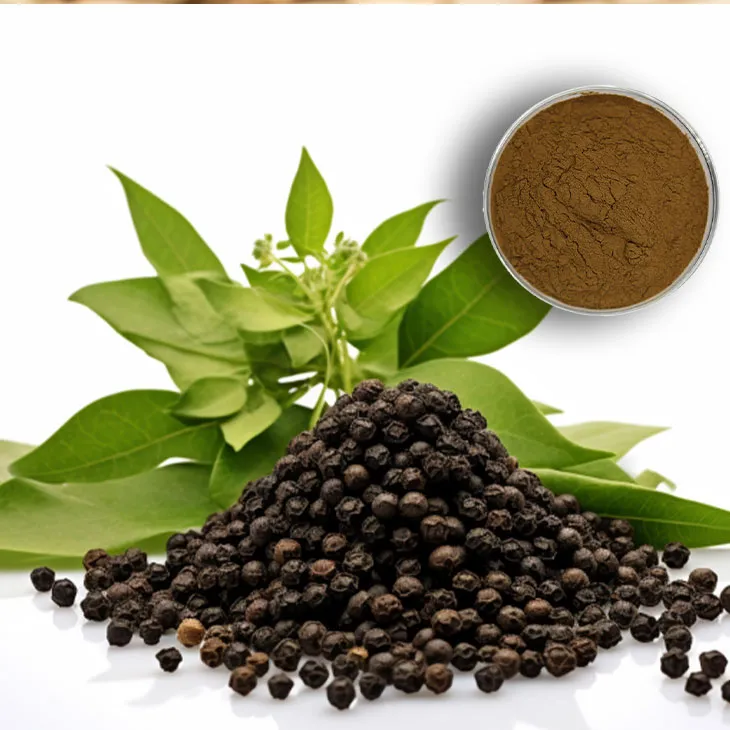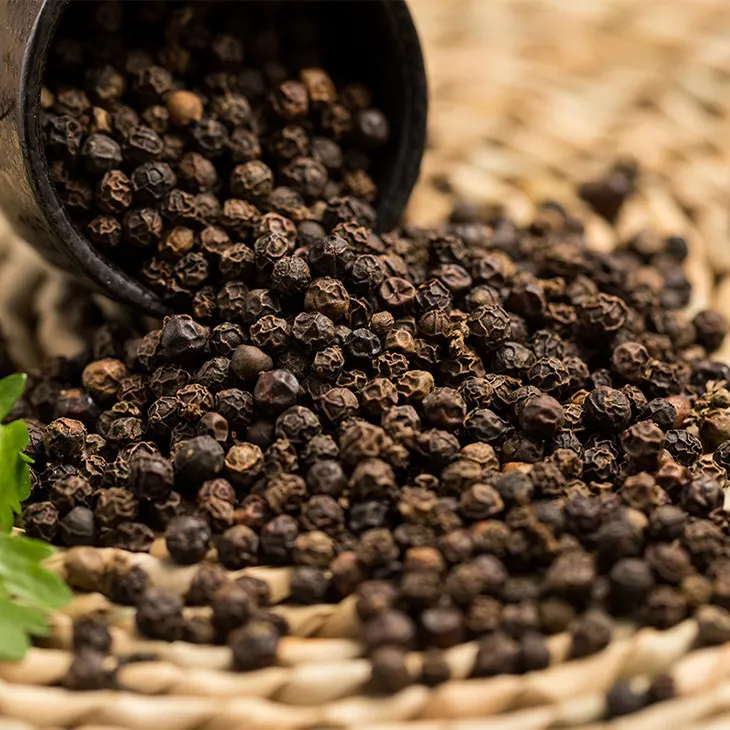- 0086-571-85302990
- sales@greenskybio.com
The process of extracting piperanine from black pepper extract.
2024-11-29

1. Introduction
Black pepper is one of the most widely used spices around the world. It not only imparts a unique flavor to food but also contains a variety of bioactive compounds. Among these, piperanine, a new alkaloid, has attracted significant attention in recent years. The extraction of piperanine from Black Pepper Extract is a multi - step process that involves several important techniques. Understanding this process is crucial for both scientific research and potential applications in various fields such as medicine and food.

2. Preparation of Black Pepper Extract
2.1 Grinding
The first step in preparing Black Pepper Extract is grinding the black pepper. This process helps to increase the surface area of the black pepper particles, which in turn enhances the efficiency of the extraction process. The black pepper should be ground to a fine powder. This can be achieved using a mortar and pestle for small - scale extraction or a mechanical grinder for larger quantities. The fineness of the powder can significantly affect the extraction yield, as a finer powder provides more surface area for the extraction solvent to interact with the compounds present in the black pepper.
2.2 Selection of Extraction Solvent
After grinding, the next crucial step is the selection of an appropriate extraction solvent. The solvent should be able to dissolve the target compound, piperanine, effectively. Commonly used solvents for black pepper extraction include ethanol, methanol, and ethyl acetate. Each solvent has its own advantages and disadvantages. For example, ethanol is a relatively safe and widely available solvent. It can dissolve a wide range of compounds present in black pepper. Methanol, on the other hand, has a higher polarity and can sometimes provide a higher extraction yield for certain alkaloids. However, it is more toxic than ethanol. Ethyl acetate is a less polar solvent and may be more selective in extracting specific compounds.
The choice of solvent also depends on factors such as the solubility of piperanine, the cost of the solvent, and the safety considerations. In some cases, a mixture of solvents may be used to optimize the extraction process. For example, a combination of ethanol and ethyl acetate may be able to extract both polar and non - polar compounds more effectively.

3. Extraction Process
3.1 Soxhlet Extraction
One of the commonly used extraction methods for black pepper extract is Soxhlet extraction. In this method, the ground black pepper is placed in a Soxhlet extractor, and the extraction solvent is continuously refluxed through the sample. The Soxhlet extractor consists of a flask containing the solvent, a condenser, and a thimble where the sample is placed. The solvent vaporizes in the flask, rises through the condenser, and condenses back into the thimble, where it extracts the compounds from the black pepper. This process is repeated multiple times until a sufficient amount of the target compound is extracted into the solvent.
The Soxhlet extraction method is advantageous because it can achieve a relatively high extraction yield. It is also a relatively simple and reproducible method. However, it can be time - consuming, especially for large - scale extractions. Additionally, the use of large amounts of solvent may pose environmental and cost - related issues.
3.2 Maceration
Another extraction method is maceration. In maceration, the ground black pepper is soaked in the extraction solvent for a certain period of time, usually several days to weeks. During this time, the solvent gradually extracts the compounds from the black pepper. The mixture is stirred occasionally to ensure better contact between the solvent and the sample. After the maceration period, the solvent containing the extracted compounds is separated from the solid residue.
Maceration is a relatively simple and low - cost method. However, it may not be as efficient as Soxhlet extraction in terms of extraction yield. The extraction time is also relatively long, and there is a risk of microbial growth during the long - term soaking process.

4. Filtration
After the extraction process, the next step is filtration to remove impurities. The extract obtained from the extraction process contains not only the target compound, piperanine, but also other substances such as insoluble particles, plant debris, and undissolved compounds. Filtration helps to separate these impurities from the extract.
There are different types of filtration methods that can be used. For small - scale extractions, a simple filter paper in a funnel can be sufficient. For larger - scale extractions, more advanced filtration techniques such as vacuum filtration or membrane filtration may be employed. Vacuum filtration uses a vacuum pump to accelerate the filtration process, while membrane filtration can be more selective in removing specific - sized particles.

5. Concentration
Once the extract has been filtered, the next important step is concentration to increase the content of the target compound. The initial extract obtained after filtration usually contains a large amount of solvent, and the concentration of piperanine is relatively low. Concentration can be achieved through various methods.
5.1 Rotary Evaporation
One common method is rotary evaporation. In this method, the extract is placed in a round - bottom flask and rotated in a water bath under reduced pressure. The solvent evaporates at a lower temperature due to the reduced pressure, and the vapors are condensed and removed. Rotary evaporation is a relatively efficient method for concentrating the extract. It can quickly reduce the volume of the solvent while minimizing the degradation of the target compound. However, it requires specialized equipment, and care must be taken to ensure that the temperature and pressure are properly controlled to avoid over - evaporation or decomposition of the sample.
5.2 Evaporation under Atmospheric Pressure
Another method is evaporation under atmospheric pressure. This method is simpler and does not require specialized equipment. The extract is simply heated in an open container, and the solvent evaporates over time. However, this method is slower than rotary evaporation, and there is a higher risk of degradation of the target compound due to the higher temperature required for evaporation. Additionally, some volatile compounds may be lost during the evaporation process.
6. Purification
After concentration, the extract still contains some impurities, and further purification is necessary to obtain pure piperanine. There are several purification methods that can be used.
6.1 Recrystallization
Recrystallization is a commonly used purification method. In this method, the concentrated extract is dissolved in a suitable solvent at a high temperature. The solution is then slowly cooled, and the piperanine crystallizes out of the solution while the impurities remain in the solution. The choice of solvent for recrystallization is crucial. It should be a solvent in which piperanine is soluble at high temperatures but less soluble at low temperatures. Commonly used solvents for recrystallization of piperanine include ethanol, methanol, and acetone. Recrystallization can effectively remove some of the impurities and improve the purity of piperanine. However, it may not be sufficient to remove all types of impurities, especially those with similar solubility properties to piperanine.
6.2 High - Performance Liquid Chromatography (HPLC)
High - Performance Liquid Chromatography (HPLC) is a more advanced and precise purification method. In HPLC, the concentrated extract is injected into a column filled with a stationary phase. A mobile phase is then pumped through the column at a high pressure. The different compounds in the extract interact differently with the stationary and mobile phases, resulting in their separation. The piperanine can be collected as a pure fraction as it elutes from the column at a specific time. HPLC can achieve a very high level of purification, separating piperanine from even very closely related compounds. However, it is a relatively expensive and complex method, requiring specialized equipment and trained operators.
7. Conclusion
The extraction of piperanine from black pepper extract is a complex process that involves multiple steps, including preparation of the extract, extraction, filtration, concentration, and purification. Each step is crucial for obtaining pure piperanine. Different methods can be used at each step, and the choice of method depends on various factors such as the scale of extraction, cost, efficiency, and the required purity of the final product. Understanding this process is important for further scientific research on piperanine, as well as for its potential applications in medicine, food, and other fields. Future research may focus on optimizing the extraction process, exploring new extraction and purification methods, and investigating the potential biological activities and applications of piperanine.
FAQ:
What are the common extraction solvents used in preparing black pepper extract?
Common extraction solvents may include ethanol, methanol, and ethyl acetate. These solvents are often chosen because they can effectively dissolve the various chemical components present in black pepper, facilitating the extraction of substances including those that are precursors to the piperine new alkaloid. However, the choice of solvent also depends on factors such as safety, cost, and the solubility characteristics of the target compounds.
Why is filtration important in the extraction process of piperine new alkaloid?
Filtration is crucial as it helps to remove impurities from the black pepper extract. During the extraction process, along with the desired components, there are other solid particles, such as pieces of pepper husk or insoluble substances. These impurities can interfere with subsequent steps such as concentration and purification. By removing them through filtration, we can ensure a cleaner extract that is more conducive to obtaining pure piperine new alkaloid.
How does concentration increase the content of the target compound?
Concentration reduces the volume of the solvent in the extract. Since the amount of the target compound (piperine new alkaloid) remains relatively constant during this process, as the volume of the solvent decreases, the proportion of the target compound in the remaining solution increases. This makes it easier to isolate and purify the compound in the later steps of the extraction process.
What are the advantages of recrystallization in purifying piperine new alkaloid?
Recrystallization is an effective purification method. One of its main advantages is that it can selectively crystallize the piperine new alkaloid while leaving behind many of the remaining impurities. The principle is based on the difference in solubility of the compound in a particular solvent at different temperatures. As the solution cools, the piperine new alkaloid, which has a relatively lower solubility at the lower temperature, crystallizes out in a purer form, while the impurities remain in the solution.
How does high - performance liquid chromatography (HPLC) purify piperine new alkaloid?
HPLC separates components based on their different interactions with a stationary phase and a mobile phase. In the case of purifying piperine new alkaloid, the sample is injected into the HPLC system. The mobile phase (a liquid solvent) carries the sample through a column filled with the stationary phase. Due to differences in the chemical properties of piperine new alkaloid and other substances in the sample, they will elute from the column at different times. This allows for the collection of the fraction containing pure piperine new alkaloid.
Related literature
- Isolation and Characterization of Piperine and Related Alkaloids from Black Pepper"
- "Optimization of the Extraction Process of Piperine from Black Pepper Extracts"
- "The Chemistry and Biological Activity of Piperine and its Analogs"
- ▶ Hesperidin
- ▶ Citrus Bioflavonoids
- ▶ Plant Extract
- ▶ lycopene
- ▶ Diosmin
- ▶ Grape seed extract
- ▶ Sea buckthorn Juice Powder
- ▶ Fruit Juice Powder
- ▶ Hops Extract
- ▶ Artichoke Extract
- ▶ Mushroom extract
- ▶ Astaxanthin
- ▶ Green Tea Extract
- ▶ Curcumin
- ▶ Horse Chestnut Extract
- ▶ Other Product
- ▶ Boswellia Serrata Extract
- ▶ Resveratrol
- ▶ Marigold Extract
- ▶ Grape Leaf Extract
- ▶ New Product
- ▶ Aminolevulinic acid
- ▶ Cranberry Extract
- ▶ Red Yeast Rice
- ▶ Red Wine Extract
-
Peppermint Oil
2024-11-29
-
Troxerutin
2024-11-29
-
Soy Extract
2024-11-29
-
Echinacea Extract
2024-11-29
-
Mulberry leaf Extract
2024-11-29
-
Elderberry Extract
2024-11-29
-
Sophora Japonica Flower Extract
2024-11-29
-
Diosmin
2024-11-29
-
Lavender Extract
2024-11-29
-
Carrageenan Extract Powder
2024-11-29





















